Reposted from the UC ANR Employee News
Field day offers demonstrations, practical advice for landowners
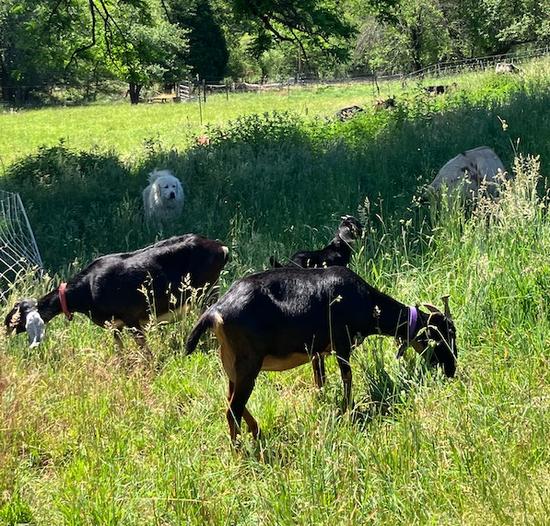
In 2020 a team of UC Agriculture and Natural Resources land management experts began hosting a series of forest stewardship workshops for landowners. The team added a special online session focusing on targeted grazing in December 2021 to meet a surging interest in using grazing for land management.
A June 2022 field day in Nevada County followed the online session and covered how to determine the best animal species for grazing (depending on goals and objectives), the logistics to consider, and how to work with contractors that rent out their animals.
“We're empowering landowners to manage their landscape for fire resilience,” said UC Cooperative Extension Forestry and Natural Resources Advisor Susie Kocher. “It's a huge problem that needs more attention. Management needs to happen across the state, so we're looking at the issue landowner by landowner.”
The collaborators also wanted landowners to understand that targeted grazing is not necessarily a one-time activity. In dealing with invasive or hardy species, grazing may be needed for several years to have an impact. "Like any living system, targeted grazing can be complex, and you can't simply turn off the key and put the livestock in the shed when the job is done," said Dan Macon, UCCE livestock and natural resources advisor for Placer, Nevada, Sutter and Yuba Counties.
Other team members included Livestock Range Management Advisor Stephanie Larson and Livestock and Natural Resource Advisor Tracy Schohr.
“There has been a lot of conversation during Forest Stewardship workshops around targeted grazing as a fuels management option and being able to see firsthand what the goats had done on the landowner's property was very informative,” said Kim Ingram, UC ANR forest stewardship education coordinator. “Dan also ran them through an exercise on putting up and dismantling electric fencing.”
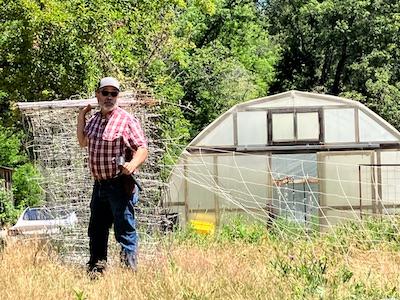
The landowner that hosted the field day also uses prescribed fire on his property for fuel management. “He had some interesting areas where he had grazed and burned. It was great for me to see how he combined those tools,” Kocher said.
The fifteen field day participants benefited from firsthand experience in using livestock for fuel reduction as well as learning realistic expectations about grazing and what is involved in owning livestock. “Having your own animals is an everyday commitment, so it may be easier to hire somebody else to do the work,” said Macon. “By the same token, there were participants who will likely become livestock owners, which is also good.”
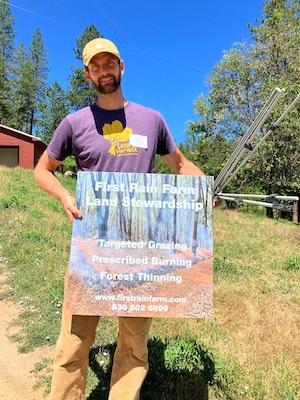
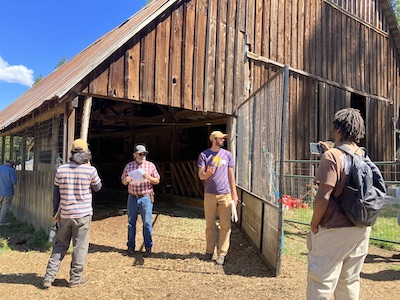
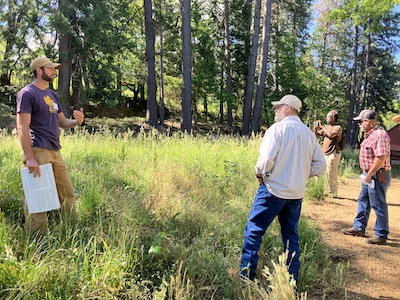
Building the skills and knowledge base to use these tools effectively helps address long-term fuel load issues. “There's no one silver bullet for dealing with the problem that took us 150 years to develop but putting these tools into people's hands is helping,” said Macon.
He emphasized the importance of providing hands-on activities for landowners to learn the work involved in using the tools and to demonstrate Cooperative Extension's investment in the communities it serves. “Not only do we introduce the tools and the techniques, but we're able to provide follow-up support for people who want to go deeper,” he said.
“There's no better extension method than having landowners go and learn from other landowners,” said Kocher. “People love to hear from people like them who are actually doing it.”
Encouraging others to collaborate
The team urges both UC ANR academics and AES (Agricultural Experiment Station) faculty to build relationships across the system and develop collaborations.
“There's a lot of overlap in the work that we do within different disciplines,” said Ingram. “Don't hesitate to reach out. Just start talking about what your interests are, what you see as the needs of your community, and connections will be made clear within the other disciplines.”
Macon added that seeking out community relationships is essential in addressing emerging issues. He encourages AES faculty to engage with county-based Extension experts. “It's critical for establishing direct ties with the community and the issues they are dealing with,” he stressed. “We have community connections that can build bridges across disciplines and across areas of interest, bringing university research to our local communities, but also informing that university research, so that it's applicable for our communities.”
Kocher suggested that people find the early adopters in their communities who want to share their work with others. “Having Extension there to bring the parties together gives it legitimacy and process that make people feel more comfortable,” she said.
“UC ANR is powerful in convening people to solve problems,” Macon added. “Don't be afraid to try something that nobody else has done in your community but that you've seen emerge as a priority in your conversations.”
Kocher also emphasizes the importance of taking risks. She started her first prescribed burn association by sending out a Zoom meeting invitation. “Years ago, I wouldn't have had the confidence to do that, but I saw one of my colleagues do it so I decided to try it,” she said. “Forty people signed up and at the first meeting eight people said they wanted to be on my steering committee. When there's enthusiasm for an issue and a potential solution, people show up. You just have to ask them.”